One of the tried and true conventions (pun intended) of each Presidential election is the slightly satirical analysis of each party’s signage. The focus — usually on the perceived meaning conveyed in type selection and letter spacing — sometimes helps deconstruct the man. For example, in 2000, reports of Al Gore’s fixation on the details of his logo helped expose his micro-managerial style.

In the white-hot intensity of the current election cycle, Americans have had ample opportunity for their own exercises in candidate deconstruction. And given my particular interests as a designer, my attention was often directed towards the construction of the message — and I suspect, so were many of my colleagues. But instead of trying to glean meaning from interpreting typographic details, it was the application of the signs that I found compelling.
Delegates at both conventions had an uncanny ability to erupt with cued spontaneity, depending on who was speaking. When the Democratic candidate for Illinois Senate, Barack Obama spoke, they loved Obama — which is amazing, because I certainly didn’t know who he was…
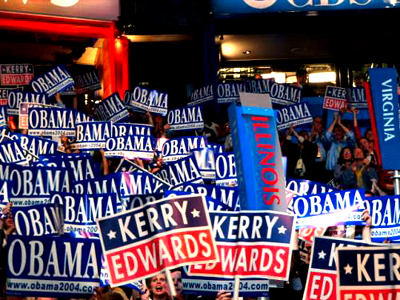
When Hillary Clinton, spoke, they loved Hillary…
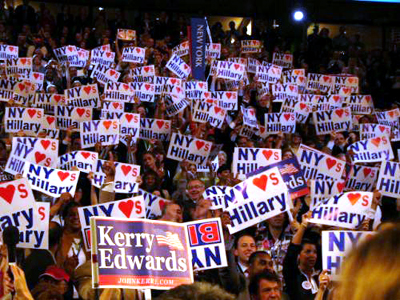
…and when Teresa Heinz Kerry appeared, they loved Teresa.
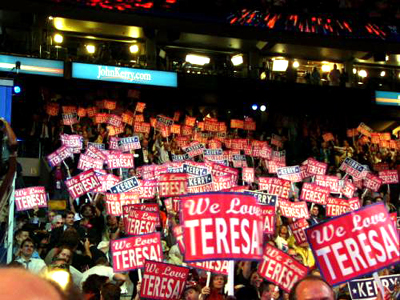
You occasionally saw a handmade sign or two…
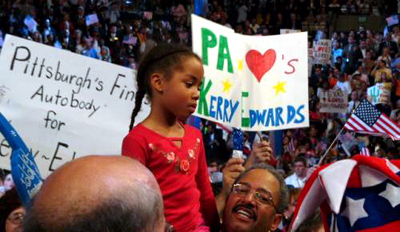
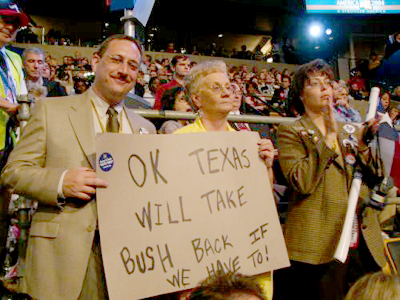
…but these made sparse appearances because of a ban, present at both conventions, on such signs. Due to security concerns, you could only bring in what you wore.
For example, here’s a Democratic delegate…
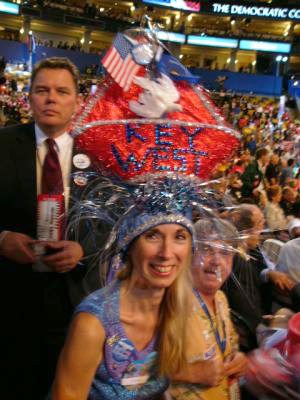
…and a couple Republicans.
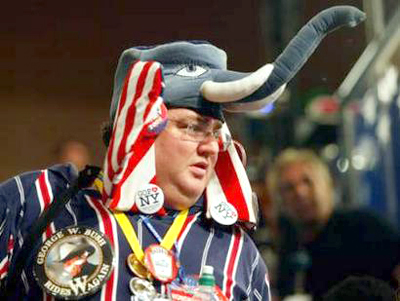
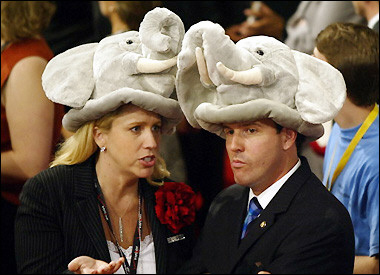
Obviously, these spontaneous displays of sign waving were directed — confirmed in the Discovery/Times Channel film Making The Message — by rooms of staffers with eyes on closed-circuit monitors and phone lines to delegates in the audience. And you can’t blame them for this. Political conventions are no longer gatherings to select a candidate and construct a unified narrative, but a full-on commercial for a pre-selected ticket and a pre-selected message. It’s an opportunity to establish the brand and they would be lax if they did otherwise.
During the Republican Convention, one minor item was occasionally mentioned in the news media and blogosphere — the handmade signs visible throughout the week were not home-made by delegates, but actually mass produced by volunteers. Given that the GOP is if anything, admirable in their ability to stay on message; this little tidbit seemed a bit odd.
A good example of their focus would be a comparison between the Bush/Cheney logo of 2000 and this year’s logo.
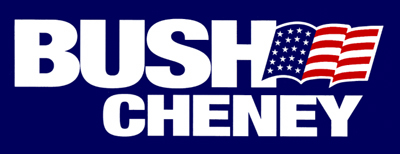

The only photographic evidence of this mass production of one-of-a-kind items that I could find comes from Konrad Fiedler of the New York Sun.
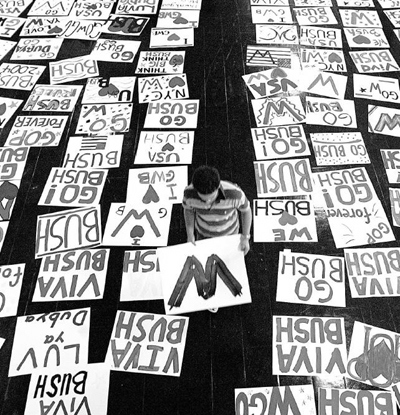
In the battle for the hearts and minds of NASCAR dads and security moms, the Republicans were quite capable in the battle of constructed folksiness, making up to 35,000 signs. Problem is, there’s only so many phrases you can come up with.
Cheney Rocks (he does?)…
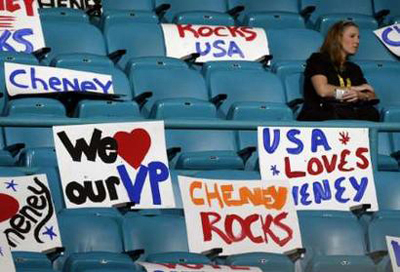
…and so does Senator John McCain.
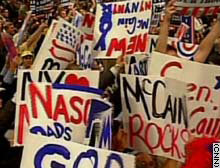
Seeing a speaker’s lines echoed in the audience, while underscoring the message, instantly deflates the spontaneity. This appeared during California Governor Arnold Schwarzenegger’s speech, which made use of the phrase economic girlymen.
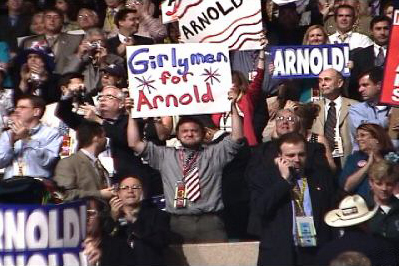
Now outside of the scripted political convention, the sign-jinks get a lot sloppier. Here’s CNN reporter Wolf Blitzer just after the third Presidential Debate. Notice the guy in the background with the beard.
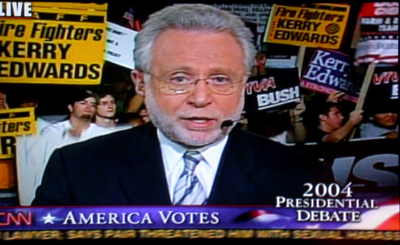
Here, he holds a sign that reads Kerry Eats Babies.
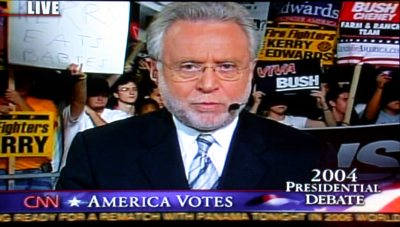
The crack Kerry/Edwards Sign Brigade jumps into action…
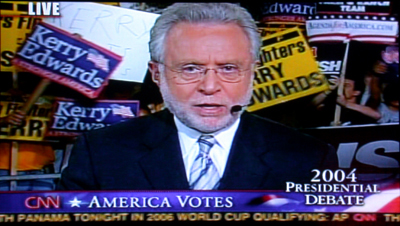
…and all is well.
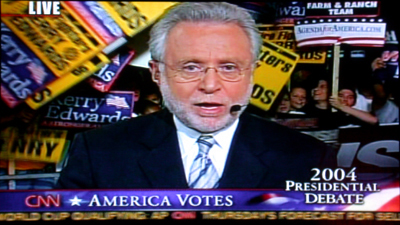
Reading the crawl at the bottom of the pictures helps give a sense of how much time this sequence took.
To extend the metaphor slightly, consider another form of directed mass sign waving: the card stunt. These synchronized sign activities are nothing new — they’re a common sight at football games — and one could consider them a first cousin to the cued signs at political conventions. But just raise the level of detail and you get something like the North Korean Arirang Festival or Mass Games.
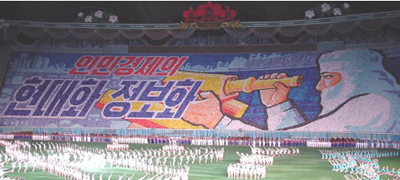
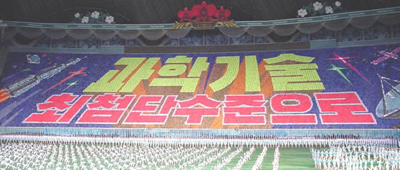
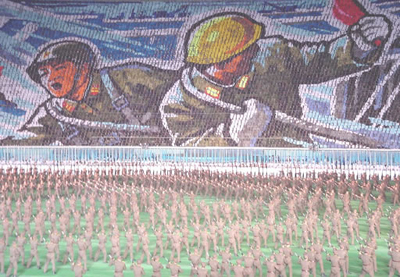
All these mass images are comprised of individual cards, held by rehearsed audiences, all in service to Fearless Leader. And in an era where attendees at recent Bush rallies are asked to take the “Bush Pledge”, edges become blurry and opposites don’t seem so far apart any more.








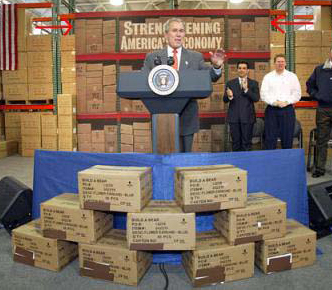
"I took several of the suggested designs and kind of recombined them and added a different approach... I 've always felt that logos and other visual symbols that are seen over and over again actually are pretty important."
Isn't this the sort of thing we despise as graphic designers?
This brings up a series of bigger questions though. Who designs political signage and promotional materials, including television ads? What would political campaigns look like if firms like Hillman Curtis or Chermayeff and Geismar took a stab at them? If firms of this caliber are already deigning these materials why are they so awful? Are these projects so micro-managed by political control freaks as to destroy any semblance they may have had of effective graphic communication?
On Nov.01.2004 at 09:22 AM